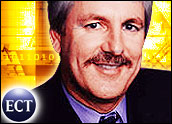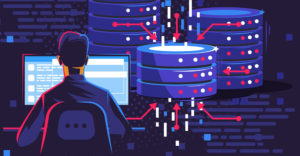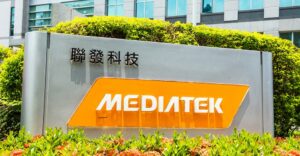
Yesterday, Bill Gates was supposed to give the best keynote talk in his history, but given I write this column the week before it is published I have no idea whether he actually delivered the goods.
Steve Jobs doesn’t do his thing until after the column publishes and most of you are still in the dark — probably along with many of his own folks if he is consistent with past practice — with regard to what he is going to say. However, what both men are discussing has a lot to do with how you will enjoy your media in the future.
Almost as a prelude to this, and probably a good candidate for “News of the Weird” was avideotaped interview of Steve Wozniak by Sam Ramji, the head of Microsoft’s open source unit. Just saying Microsoft open source is weird enough, but when you throw in the Woz, I start looking to see if someone put something creative into my drink.
Even weirder was Wozniak’s remark that he would like Sam’s job; makes you wonder if someone put something in his drink. The interview, which was done to promote Woz’s new book, iWoz: From Computer Geek to Cult Icon: How I Invented the Personal Computer, Co-Founded Apple and Had Fun Doing It, does more than tell how the computer age started. In a strange way, it probably also helps point the way to where the next big thing is likely to come from — the hearts of those young enough to take chances and not realize what they are doing is impossible.
In the near term, though, the big fight this week will be between Microsoft and Apple, and Apple enters with some advantages it has never had before. Microsoft effectively wiped the floor with Apple, but it may return the favor in a few hours.
Microsoft vs. Apple: Content Will Make the Difference
Stepping aside from having fun torking off the “Cult of Apple,” which I enjoy far too much, we should remember that Apple may be behaving more like the old Microsoft these days, and as a result, it is actually facing some very similar illegal monopoly problems with the iPod and iTunes. In addition, I’ve heard what Apple is doing with the new user interface for Leopard, and it is supposed to be stunning. And the iPodPhone — cute that Cisco took the “iPhone” brand — has got a lot of us wondering whether Apple can take the phone market away from Nokia and Motorola, and it might actually be able to.
To win decisively, one of the two vendors will have to showcase media access that exceeds what the other can do — and here Apple’s relationship with Disney could work for or against the company. If it works for, it means Apple will have exclusive high definition content from the one studio people ask for by name. If it goes against, the other studios — with the likely exception of Sony — may collectively sign deals with Microsoft to counter the Disney competitive threat.
This is all about content, and I don’t know enough about either event to make this call, but I do know that whoever locks up the best content will probably take this segment. So, all else aside, watch what both vendors do with content — because that will likely be the decisive part of the digital home battle.
Blu-ray/HD DVD Impact
While Microsoft is on the HD DVD side and Apple on the Blu-ray side, what I understand from both shows is that the focus will be on downloaded content. I haven’t seen a single rumor that Apple will be making a run at the segment with a Blu-ray product — except maybe like Dell has done with a high-end PC or Laptop targeted at the professional market.
As expected, HD DVD ended the year with a clear lead, but not enough market saturation even by both players combined to hold off the threat of competing download services — if those services get access to content from both camps, which appears likely. This may actually forecast the beginning of the end for optical media, as the Internet and hard drives take center stage
Strangely enough, Apple and Microsoft appear to agree that downloadable content is the future, and this may be one of several areas where the two sides will be in sync.
Microsoft May Have Hardware Advantage
One CES event is a first, and it may be bigger than anyone realizes. While Microsoft, when it launches a new OS, has shown prototype PCs in the past, they have seldom come to market. In this case, HP and Toshiba both presented prototype PCs designed to showcase collaboration between Microsoft and these vendors with regard to what a Vista machine should look like. This is something that comes naturally to Apple, but — because there is so much distrust between vendors — doesn’t come naturally in the PC space.
The HP Touch Screen Media Center PC is how I think Apple should have gone with the iMac. It is more stable, it incorporates a next-generation technology (the current iMac was actually a step back from the previous model, which had breakthrough monitor arm), and it is focused on media. It is arguably the most advanced PC that HP has developed in years (it had a paper thin laptop that beat the Apple Titanium to market but was impractical), and it showcases HP’s R&D in a stunning hardware design.
On stage was a second product from HP that could break open the segment — basically a true server for the home. This product is intended to provide a safe place for all of your content and has at its heart a real server operating system rather than the typical embedded software.
Virtually all of the complexity has been concealed behind an easy-to-use interface, and this product can be used to not only serve up music and video, but also to serve out personal photos and documents to friends and family. If you need them on the road, you can get this stuff yourself, as well. This is one of those products that would be interesting to see from Apple — particularly because HP has taken a very Apple-like approach it.
Toshiba’s offering is potentially even more interesting, because it introduces a number of market-leading technologies in a single laptop product. It has come up with a revolutionary touch screen laptop that addresses the weight problem with tablet PC screens, has a sharp monochromatic industrial design, and a new cell-phone-like external secondary display that provides notification.
In addition, it has biometric security — unusual on a consumer product — and a level of integrated Bluetooth, WAN (wide area network), and WiFi that not only seems to work well, but does so seamlessly. It even uses a wireless docking station, which is a clear market first. This product, which won’t be inexpensive, looks and feels at least a year more advanced than anything else that is out — particularly the existing Apple lines.
While HP has been executing very well for some time now, this is the first product from Toshiba I’ve seen in a long while that is capable of exciting a market and showcasing Toshiba’s capabilities — which, given its history, should be market-leading in laptops. I had a chance to interview the principals behind this box, and they plan to follow up this product with a number of others as they make a run for the top spot in mobile computers again.
Between HP and Toshiba, the bar was set much higher than ever before — and I really don’t think Apple was aware that this level of innovation was even possible outside of its walls or that it was even possible for Microsoft and its partners to work close enough together to rival Apple’s internal development structure. I should admit I wasn’t convinced this was possible either, until I saw these three offerings.
Vista Surprises
While there were several Vista surprises, the one targeted at Apple was the new active background. The ability to use a video as the screen background was unexpected, and something you’ll have to see to appreciate. It could actually have some practical uses for things such as using streaming to watch your home and kids while you are working — but for the most part, it’s eye candy.
Given that Apple is often all about eye candy and a lot of folks love that, having Microsoft — the command line company — do Apple one better is certainly fun. Of course, with Apple’s response a few hours away, this advantage, such that it is, may be short-lived.
One other advancement really stands out and should concern both Apple and Sony: the aggressive approach to gaming and the move to allow Xbox controllers and Xbox games to easily move between the two platforms.
With the undisputed market lead in current-generation gaming consoles and titles for those consoles, this attack vector is one where Apple has traditionally been vulnerable, and that may explain why Apple has recently been hiring game developers — the results of which probably won’t show up until late this year or next.
Of course, while it is fun to position Microsoft against Apple, the real challenge is to overcome buyer apathy in what is a traditionally slow time of year for technology like this. One interesting note: With Bill Gates cycling out of Microsoft and Steve Jobs still under investigation by the SEC, it is possible that this is the last time these two legends will effectively go head to head. That alone may make this, and the upcoming MacWorld presentation, historic.
Regardless of whether you use Apple or Windows, having a little excitement and competition on something other than price is a good thing and, I have to say, it is also long overdue.
Rob Enderle is a TechNewsWorld columnist and the Principal Analyst for the Enderle Group, a consultancy that focuses on personal technology products and trends.





















































